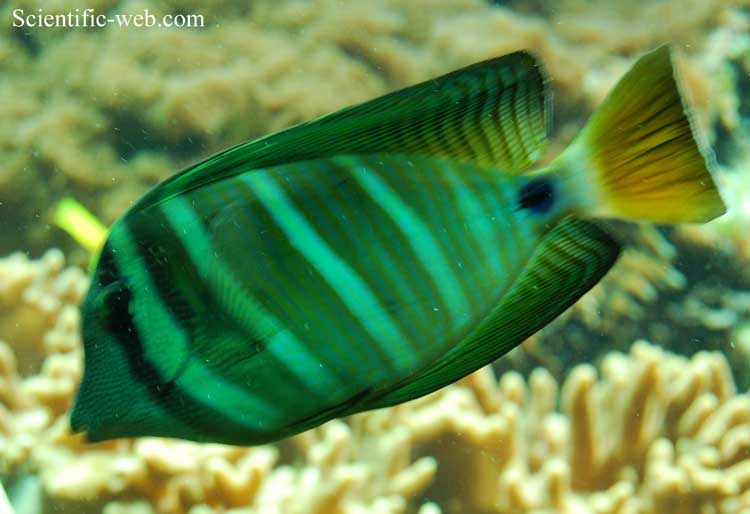
Zebrasoma veliferum, Photo: Michael Lahanas
Superregnum: Eukaryota
Cladus: Unikonta
Cladus: Opisthokonta
Cladus: Holozoa
Regnum: Animalia
Subregnum: Eumetazoa
Cladus: Bilateria
Cladus: Nephrozoa
Superphylum: Deuterostomia
Phylum: Chordata
Subphylum: Vertebrata
Infraphylum: Gnathostomata
Megaclassis: Osteichthyes
Superclassis/Classis: Actinopterygii
Classis/Subclassis: Actinopteri
Subclassis/Infraclassis: Neopterygii
Infraclassis: Teleostei
Megacohors: Osteoglossocephalai
Supercohors: Clupeocephala
Cohors: Euteleosteomorpha
Subcohors: Neoteleostei
Infracohors: Eurypterygia
Sectio: Ctenosquamata
Subsectio: Acanthomorphata
Divisio/Superordo: Acanthopterygii
Subdivisio: Percomorphaceae
Series: Eupercaria
Ordo: Acanthuriformes
Subordo: Acanthuroidei
Familia: Acanthuridae
Genus: Zebrasoma
Species: Zebrasoma veliferum (or Zebrasoma velifer)
Name
Zebrasoma veliferum (Bloch, 1795)
Vernacular names
Deutsch: Östlicher Segelflossen-Doktorfisch
English: Sailfin tang
suomi: Purjevälskäri
magyar: Doktorhal
한국어: 새일핀 탱
中文: 高鳍刺尾鱼
The sailfin tang (Zebrasoma veliferum) is a marine reef tang in the fish family Acanthuridae. They may live at water depths of 1 - 60 m (3 - 200 ft) or more. The fish grow to a maximum length of 40 cm (15.8 in). It has an extensive range throughout Oceania, the Indian Ocean, and the South Pacific. Zebrasoma veliferum is a popular fish in the aquarium trade. They are herbivorous fish specializing in filamentous algae. Though their skin is light beige with stripes, it can turn dark brown under stress.
Description
Stamp of Kazakhstan
This species is one of the largest members of its genus. The largest scientifically measured sailfin tang was 40.0 cm (15.7 in).
The body of the sailfin tang is disc-shaped with a much elevated dorsal fin and a big anal fin. It has an extended snout. Compared to the other members of the genus Zebrasoma, the sailfin tang has larger but fewer pharyngeal teeth. On each side of the caudal peduncle is a single sharp spine (the so-called scalpel) which is used for defence and to establish dominance. When the fish is not using its scalpel, it is folded down inside a groove.
The sailfin tang is decorated with broad, pale yellow bands that alternate with darker bands over its body. The bending extends into both dorsal and anal fins. On the darker bands are yellow dots and stripes. The caudal fin is yellow. The head of the fish is white adorned with yellow dots. A dark band with yellow dots runs across the eye and another dark band with dots is located right behind the eye.
Juvenile specimens look similar to the adult fish, but with more yellow colouring.[2]
References
Abesamis, R.; Choat, J.H.; McIlwain, J.; Clements, K.D.; Myers, R.; Rocha, L.A.; Nanola, C.; Russell, B.; Stockwell, B. (2012). "Zebrasoma veliferum". IUCN Red List of Threatened Species. 2012: e.T178010A1520055. doi:10.2305/IUCN.UK.2012.RLTS.T178010A1520055.en. Retrieved 19 November 2021.
Community, Aquatic. "Appearance".
Froese, Rainer, and Daniel Pauly, eds. (2005). Zebrasoma scopas in FishBase. May 2005 version.
Retrieved from "http://en.wikipedia.org/"
All text is available under the terms of the GNU Free Documentation License

